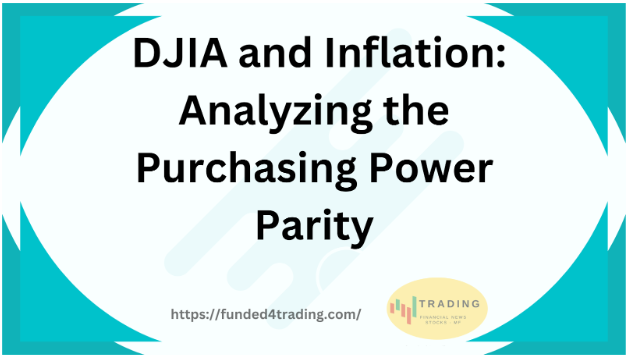Introduction:
In the complex realm of financial markets, the Dow Jones Industrial Average (DJIA) stands as an iconic barometer, reflecting the pulse of the global economy. As investors navigate through the intricate web of economic indicators, one factor that often looms large is inflation. In this discourse, we delve into the fascinating relationship between DJIA and inflation, with a focus on the concept of Purchasing Power Parity (PPP).
Understanding DJIA:
The DJIA, often referred to as “the Dow,” is a stock market index that comprises 30 of the largest and most widely held public companies in the United States. It is a key benchmark used by investors and analysts to gauge the performance of the American stock market. As a price-weighted index, the DJIA reflects changes in the stock prices of its constituent companies, making it a valuable tool for assessing market trends.
Inflation’s Impact on DJIA:
Inflation, the sustained increase in the general price level of goods and services, has profound implications for financial markets. As inflation erodes the purchasing power of currency, it can influence investment decisions and market dynamics. Understanding how inflation affects the DJIA is crucial for investors seeking to navigate the complex landscape of financial markets.
Purchasing Power Parity (PPP) Defined:
Purchasing Power Parity is a theory in economics that suggests that in the long run, exchange rates between currencies should equalize the prices of identical baskets of goods and services in any two countries. In the context of DJIA and inflation, PPP provides a lens through which we can analyze the impact of inflation on the purchasing power of investors.
Analyzing the Relationship:
As inflation rises, the purchasing power of a currency diminishes, impacting the real returns on investments. In the case of DJIA, companies may experience changes in costs, revenue, and profitability as a result of inflation. Investors must carefully assess how inflationary pressures can influence corporate performance and, consequently, the overall health of the stock market.
Historical Trends:
Examining historical data reveals intriguing patterns in the relationship between DJIA and inflation. During periods of high inflation, investors often witness increased market volatility and uncertainty. Conversely, low inflation environments may provide a more stable backdrop for stock market performance. Analyzing these trends can offer valuable insights for investors crafting resilient portfolios.
Navigating Inflationary Challenges:
For investors aiming to secure Adsense-approved websites dedicated to financial content, staying abreast of inflationary challenges is paramount. Crafting insightful content that guides readers through the nuances of inflation’s impact on DJIA can position a website as a reliable resource for investors seeking informed perspectives on market dynamics.
Conclusion:
In the ever-evolving landscape of financial markets, the intricate dance between DJIA and inflation unfolds. By grasping the nuances of Purchasing Power Parity and dissecting historical trends, investors can gain a deeper understanding of how inflation shapes market dynamics. As we celebrate the one-year anniversary of this website, dedicated to providing professional insights into the world of finance, we invite readers to embark on a journey of knowledge and discovery. In an era where information is power, understanding the interplay between DJIA and inflation is an invaluable asset for every investor.

